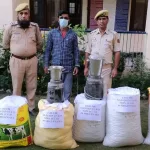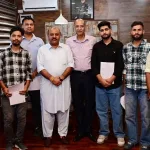In the valley of kashmir, a tradition as old as time itself is the cultivation of saffron, the world’s most precious spice. For centuries, saffron has adorned the landscapes and enriched the culture of the valley, but its future hangs in the balance. It is imperative that we take concerted action to preserve this invaluable heritage. Saffron, often referred to as the “Red Gold,” holds a special place in Kashmir’s cultural and economic identity. The vibrant crimson fields that bloom every autumn not only contribute to the livelihoods of thousands but also provide a distinctive flavor to Kashmiri cuisine. Yet, the cultivation of this prized spice is facing various challenges. Climate change is a formidable adversary, with shifting weather patterns and unpredictable rainfall affecting saffron production. Moreover, the saffron industry faces stiff competition from counterfeit saffron, a problem that erodes the trust of consumers in the authenticity of Kashmiri saffron. To safeguard this precious crop, we must address these issues head-on. May experts are of the opinion that it is essential to implement sustainable farming practices and adapt to changing climate conditions. The saffron growers of Kashmir have inherited a legacy of expertise in saffron cultivation, and their knowledge must be combined with modern techniques to mitigate the impact of climate change. Furthermore, Efforts to ensure the purity and authenticity of Kashmiri saffron should also be intensified. The government, in collaboration with local saffron associations, should implement strict quality control measures to protect the reputation of this valuable commodity. Establishing certifications and labels for genuine Kashmiri saffron can help consumers make informed choices and support local growers. Additionally, promoting and expanding the saffron industry in Kashmir can create new avenues for economic growth. This could involve setting up cooperatives, providing financial incentives, and investing in research and development to explore the untapped potential of saffron and its by-products. Preserving saffron cultivation is not just about safeguarding a spice; it’s about preserving the heritage and identity of the Kashmir valley. It is a collective responsibility, from the government to the citizens, to ensure that future generations can witness the enchanting saffron fields that have graced the valley for centuries. The preservation of saffron cultivation in Kashmir is not merely an economic matter; it is a cultural imperative. By embracing sustainability, ensuring authenticity, and promoting growth in the saffron industry, we can secure the future of this precious crop and celebrate its legacy for generations to come.





